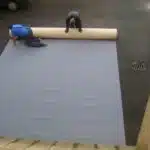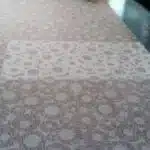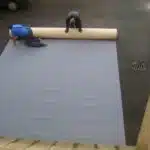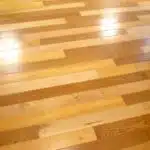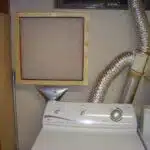Installing carpet on stairs can be a challenging task, but with the right tools and techniques, it is achievable. As a professional in the field of carpet installation, I understand the importance of providing quality service to my clients. Installing carpet on stairs requires attention to detail and precision, as well as knowledge of the necessary steps to ensure a successful installation.
Before beginning the installation process, it is essential to prepare the stairs by removing any existing carpet or debris. It is also crucial to measure the dimensions of each stair accurately and choose the appropriate materials for both padding and carpeting. In this article, we will outline step-by-step instructions on how to install carpet on stairs to achieve a clean and professional finish. Whether you are a DIY enthusiast looking for guidance or a homeowner seeking professional insights, this guide will provide you with practical tips for installing carpet on your stairs effectively.
Necessary Tools And Materials
Carpet installation on stairs can be a challenging task, requiring the right tools and materials for a successful outcome. It is important to have a checklist of necessary items before beginning the process. The following are some essential tools and materials required for installing carpet on stairs.
Firstly, you will need a power stretcher to install the carpet properly. This tool helps stretch the carpet taut across each stair so that it fits snugly and does not ripple or wrinkle. You will also need a tack strip, which is nailed or glued down along the back of each stair to hold the carpet in place. A knee kicker is another essential tool for securing the carpet, used to help secure it tightly against walls and other surfaces.
Tips for efficiency include purchasing pre-cut stair runners that already fit your staircase’s dimensions. This saves time and effort as there is no need to measure and cut the carpet yourself. Another cost-saving technique involves using remnants or scraps of leftover carpet from previous installations, thereby reducing expenses.
In order to prepare your stairs for installation, you must first remove any existing carpet or flooring material from them. Once this has been done, clean your stairs thoroughly before starting with any measuring or cutting processes.
Preparing The Stairs For Installation
Before beginning to install carpet on stairs, it is crucial to prepare the stairs adequately. This involves removing any existing carpet or flooring and ensuring that the area is clean and free of debris. Additionally, it is essential to inspect the stairs for any damage or wear that may need repair before proceeding with installation.
To ensure safety during installation, there are several precautions one should take. First, make sure the stairs are well-lit so that you can see what you’re doing. Secondly, wear proper footwear with slip-resistant soles to avoid slipping and falling. Lastly, use caution when working with tools and always follow manufacturer instructions.
To successfully prepare your stairs for carpet installation, consider following these bullet point guidelines:
- Remove all existing flooring materials from the staircase
- Clean the staircase thoroughly with a broom or vacuum
- Repair any damages or defects in the stair treads or risers
- Sand down rough spots on wooden steps
- Ensure that the stair treads are level before installing the carpet
Now that you have prepared your stairs for carpet installation by taking necessary safety precautions and following specific guidelines for preparation, it’s time to move on to measuring techniques for your stairs.
Measuring The Stairs
After preparing the stairs for installation, the next crucial step is measuring them accurately. Measuring accuracy is vital in determining how much carpet you need and how to cut it so that it fits perfectly on each stair. Start by measuring the width of each stair and then adding a few inches to ensure that you have enough carpet to wrap around the edges. Also, ensure that you measure the length from one end of the tread to the other.
Dealing with irregular stairs can be challenging, but it’s essential to get accurate measurements. For curved or angled stairs, measure along the middle of each tread and riser. Then, use these measurements to create a template out of cardboard or paper so that you can transfer this pattern onto your carpet material. Remember always to double-check your measurements before cutting any carpet pieces.
In summary, accurately measuring your stairs is crucial for a successful installation process. By taking precise measurements and creating templates for any irregularities, you can ensure that your carpet fits snugly and looks great on your stairs. Next up, we will discuss how to choose the right carpet and padding for your staircase project.
| Steps | Width (inches) | Length (inches) | Total Square Footage |
|---|---|---|---|
| Step 1 | |||
| Step 2 | |||
| Step 3 |
Choosing The Right Carpet And Padding
- When choosing a carpet, it is important to consider the type of carpet fibers and their ability to resist stains and wear.
- Depending on the desired look and the amount of traffic, a thicker, denser carpet may be better suited to ensure longevity.
- Padding should be chosen based on the type of carpet and the weight of the traffic.
- Higher quality padding can help protect the carpet and reduce wear and tear.
- Carpet padding should be chosen based on the thickness of the carpet, as thicker carpets require thicker padding.
- The right combination of carpet and padding can help ensure a longer lasting installation, while keeping the desired aesthetic in place.
Carpet Type
When it comes to choosing a carpet type for your stairs, there are several factors that you need to consider. First and foremost, the durability of the carpet should be a top priority. Stairs receive heavy traffic on a daily basis, so you want a carpet that can withstand constant wear and tear. A low-pile or looped carpet is typically the best option as it resists crushing and matting better than plush carpets.
Another important factor to consider when choosing a carpet for your stairs is color options. While it may be tempting to go with a light-colored carpet to brighten up your space, keep in mind that lighter colors tend to show dirt and stains more easily. Neutral colors like beige, gray, or brown are popular choices for stairs as they hide dirt well and blend seamlessly with most interior designs. However, if you want to make a statement with your stairs, bold colors like red or navy can add personality and dimension.
In conclusion, choosing the right carpet type for your stairs comes down to durability and color options. As an installation professional, I recommend opting for a low-pile or looped carpet in neutral shades like beige or gray for long-lasting results. However, if you’re feeling adventurous, don’t be afraid to go bold with a vibrant hue that reflects your personal style!
Carpet Thickness
When it comes to choosing a carpet for your home, thickness is another factor that you need to consider. Carpet thickness refers to the height of the fibers or pile on the surface of the carpet. A thicker carpet can provide greater comfort and insulation, but it may not be as durable as a low-pile option. As an installation professional, I recommend considering the pros and cons of each option before making a decision.
One of the benefits of a thicker carpet is its ability to provide extra cushioning underfoot. This can be particularly beneficial in areas where you spend a lot of time standing or walking, such as your bedroom or living room. Additionally, thicker carpets can help insulate your home by trapping heat and reducing noise levels. However, thicker carpets are also more prone to matting and crushing over time, which can make them look worn out faster than their low-pile counterparts.
Some popular brands that offer thick carpets include Mohawk, Shaw Floors, and StainMaster. These brands offer a variety of materials and styles to choose from, including plush and frieze options with varying pile heights. As an installation professional, I recommend working with trusted brands like these to ensure high-quality results. Ultimately, choosing the right thickness for your carpet will depend on your personal preferences and lifestyle needs.
Padding Type
When it comes to choosing the right carpet and padding, thickness is not the only factor to consider. Another essential aspect of carpet installation is selecting the right type of padding. The purpose of padding is to provide a cushion between the carpet and the floor, making your flooring more comfortable and durable. Different types of padding offer varying levels of support, so it’s essential to choose one that meets your needs.
There are several different types of padding available on the market, each with its pros and cons. Some popular options include foam, rubber, and fiber. Foam padding is an affordable option that provides good insulation but may not be as durable as other materials. Rubber padding offers excellent durability and shock absorption but can be more expensive upfront. Fiber padding is made from recycled materials and offers good insulation but can flatten over time.
When installing padding on stairs, it’s crucial to follow proper installation techniques to ensure safety and longevity. The most important thing to keep in mind when installing stairway carpeting is safety; the last thing you want is for someone to slip or fall due to improper installation. It’s essential to use a high-quality underlayment that provides adequate support while also preventing slipping or shifting underfoot. In summary, selecting the right type of carpet padding requires careful consideration of your needs and preferences while also keeping safety in mind during installation techniques.
Cutting The Carpet To Size
Cutting the carpet to size is a crucial step in the installation process. It requires precision and accuracy, as any mistakes could lead to an uneven and unsightly finish. Proper measurements are essential for successful cutting, and trimming techniques must be used to ensure that the carpet fits snugly against each stair.
To begin, measure each stair carefully, taking note of any irregularities in size or shape. Then, transfer these measurements onto the back of the carpet using a chalk line or other marking tool. Be sure to add an extra inch or two around the edges to allow for trimming and adjustments.
Once you have marked your measurements on the carpet, it’s time to start trimming. There are several trimming techniques that can be used depending on the type of carpet and personal preference. Some popular options include using a straight-edge knife or a specialized carpet cutter. Take your time and make small cuts to avoid over-trimming or damaging the material. With proper measurements and trimming techniques, your stairs will soon be ready for padding installation.
Attaching The Padding
Now that you have cut the carpet to size, it is time to move on to attaching the padding. Padding thickness plays a vital role in both the comfort and durability of your stairs’ carpeting. For staircases, it is recommended to use padding with a thickness of ½ inch or less. The padding should be cut slightly smaller than the carpet itself, about 1 inch less on all sides.
As you attach the padding, keep in mind that there are alternative padding materials available in the market other than foam. These materials include rubber, felt, and wool. They each have their own unique properties that can provide additional benefits such as noise reduction and insulation. However, they may also come at an increased cost.
When choosing padding material, make sure it complements your desired level of comfort and functionality for your stairs. Remember that this step is crucial for ensuring your carpet’s longevity and stability on your staircase. Once you have attached the padding securely onto each step, you can then move on to securing the carpet to the bottom step without any hesitation or fear of unsatisfactory results.
Securing The Carpet To The Bottom Step
- Accurately measuring and cutting the carpet for installation on the stairs is a critical first step in the process.
- The carpet should be cut at least two inches wider than the tread for proper installation.
- Once the carpet is cut, it should be attached to the bottom step with a strong adhesive.
- It is important to be sure that the carpet is firmly adhered to the step to ensure the highest quality installation.
Cutting The Carpet
Cutting the carpet for stairs is a crucial step in securing it to the bottom step. Common mistakes during this process include cutting the carpet too short or too long, resulting in an uneven appearance. To ensure a professional installation, it’s important to measure twice and cut once. It’s also recommended to use a straight edge and a sharp knife to make clean cuts.
One way to approach cutting the carpet is to start at the top of the stairs and work your way down, making sure each piece fits perfectly before moving on to the next step. This allows for any adjustments that may need to be made along the way. Additionally, it’s important to consider how much carpet will be needed for each step, as some may require more material than others.
Overall, taking your time with cutting and measuring will result in a beautifully installed carpet on your stairs. Remembering these steps and avoiding common mistakes will help you achieve a professional look that will impress anyone who sees it. By following these guidelines, you’ll have secure and stylish staircase in no time.
Attaching To Bottom Step
After cutting the carpet to fit each step, the next important step in securing it is attaching it to the bottom step. This process can be tricky, and common mistakes include not using enough adhesive or using too much, resulting in an uneven appearance. To ensure a professional installation, it’s important to follow proper techniques.
One method for attaching the carpet to the bottom step is to use a tack strip. This involves nailing strips of wood along the edges of the stair riser and tread, then tucking the carpet between them and securing it with a hammer. Another alternative method is using adhesive, which requires carefully applying glue to the back of the carpet and pressing it into place on top of the bottom step.
Regardless of which method is chosen, it’s important to avoid common mistakes such as leaving gaps between strips or using too little adhesive. Taking your time and being patient will result in a secure and beautiful installation that will last for years to come. By following these guidelines, you’ll have a stylish staircase that will impress anyone who sees it.
Stretching The Carpet
After the padding and carpet are secured to the stairs, it is time to stretch the carpet. This process ensures that the carpet fits snugly against each stair and eliminates any bumps or wrinkles. Common mistakes during this phase include overstretching or not stretching enough, resulting in uneven or loose carpet.
To achieve a professional installation, use a knee kicker tool to stretch the carpet against each stair. Start from the top of the stairs and work your way down, making sure to align the carpet with each riser as you go. Use a power stretcher for larger staircase installations to ensure even tension throughout.
It is important not to rush through this step as it can significantly impact the overall appearance and longevity of your new carpeted stairs. Take your time and ensure that each stair is stretched properly before moving on to attaching the carpet to the top step.
Transition: Now that we have ensured that our carpet is stretched evenly on each stair, let’s move on to attaching it securely at the top without causing any damage or wrinkles.
Attaching The Carpet To The Top Step
After stretching the carpet, it’s time to attach it to the top step. This process requires precision and attention to detail to ensure a seamless installation. The two methods of attaching carpet on stairs are overlap and tuck, each with its own pros and cons.
The overlap method involves folding the carpet over the edge of the stair and securing it underneath with staples or adhesive. This method is quick and easy, but may not provide as tight of a fit as the tuck method. On the other hand, tucking involves cutting the carpet to size and wedging it tightly into the crevice between the stair and riser. While this method takes more time and effort, it results in a snug fit that won’t slip or wrinkle over time.
DIY vs professional installation is another important factor to consider when attaching carpet on stairs. While DIY installation may save money, it also comes with a higher risk of mistakes that can lead to an uneven or unsafe result. Hiring a professional ensures a flawless finish that meets safety standards.
Once you’ve chosen your preferred method and decided whether to go DIY or hire a professional, securing the carpet to the edges is essential for both safety and aesthetics. Proper tools such as tack strips and seam tape should be used to secure all edges firmly in place without any gaps or wrinkles. With these steps completed, your newly installed carpeted stairs will be safe, stylish, and ready for use.
Securing The Carpet To The Edges
- Accurately measuring the staircase is an important first step in installing carpet on stairs.
- The carpet must then be cut to the correct size, taking into account the width and length of each step.
- Installing the carpet requires the use of a knee-kicker, which stretches the carpet across the stairs.
- The edges of the carpet must then be secured by tucking them into the grooves between steps.
- Stair rods and grippers can also be used to keep the edges of the carpet in place.
- Finally, a strip of metal should be attached along the edge of each step to ensure the carpet is secured.
Measuring Staircase
To achieve a professional finish when installing carpet on stairs, it is crucial to measure the staircase accurately. Choosing carpet for your stairs is just half of the process; you must have the proper measurements to ensure that you get enough material for installation. Before you start measuring, gather all the necessary tools like a measuring tape, pen, and paper.
When measuring the stairs’ width and length, take into account every corner and turn as well as any design features. Start by measuring the width of each tread from one side to another and then from front to back. Ensure that you measure each tread in different sections to account for any variations due to shape or size differences. After this, measure the stair’s height from the bottom edge of one riser to the top of another.
Once you have gathered all the measurements needed, double-check them before purchasing materials. This will help ensure that you purchase enough carpeting for your project without overbuying or running out of material halfway through installation. Remember also that some types of carpets require more than other materials depending on their thickness and density, so make sure to factor this into your calculations as well. With accurate measurements taken beforehand, securing your new carpet onto your stairs will be a breeze!
Cutting Carpet
After taking accurate measurements, the next step in installing carpet on stairs is cutting the material. Cutting techniques are crucial in ensuring that the carpet fits perfectly on each tread and riser. One common mistake that DIYers make when cutting carpet is not accounting for any irregularities in the staircase’s shape and size. This can result in uneven cuts, which will affect the final finish.
To avoid such errors, it is essential to use tools for precision when cutting carpet. A straight edge or ruler can help you achieve straight cuts while a utility knife or carpet cutter will allow you to cut through dense materials with ease. It is also crucial to take safety precautions when using these tools, like wearing gloves to protect your hands and ensuring that the blade is sharp to prevent accidents.
Cutting the carpet accurately will ensure that securing it onto the edges of each tread and riser will be smooth sailing. It is important to use adhesive glue or staples to secure the carpet onto each step’s edges. This ensures that there are no gaps between the wall and the stair runner, preventing any tripping hazards. Remember to stretch out each piece of carpet as tightly as possible before fastening it down for a seamless finish.
In conclusion, cutting techniques are critical when installing carpets on stairs as they ensure proper fitting on every tread and riser. Common mistakes can be avoided by using precise tools and taking safety precautions during cutting. Securing the carpet onto each edge with adhesive glue or staples will give a professional finish while preventing any tripping hazards caused by gaps between walls and stair runners.
Securing The Edges
Proper edge securing is essential when installing carpets on stairs. It not only gives a professional finish to the staircase but also ensures that there are no tripping hazards caused by gaps between the wall and stair runner. Different edge finishes require different securing methods, and it is crucial to choose the right one for each type.
For square-edged stairs, adhesive glue or staples are commonly used to secure the carpet onto each step’s edges. This method involves stretching out each piece of carpet as tightly as possible before fastening it down. For rounded or bull-nosed edges, however, tacking strips are used to secure the carpet in place. Tacking strips provide a firm grip on the edges of each step, ensuring that there are no loose ends or wrinkles on the staircase.
The importance of proper edge securing cannot be overstated when installing carpets on stairs. It ensures that the carpet fits perfectly on every tread and riser, preventing any tripping hazards caused by gaps between walls and stair runners. Using appropriate methods for different edge finishes will result in a seamless finish that is both visually pleasing and safe for anyone using the staircase.
Trimming Excess Carpet
After securing the carpet tightly to the stairs, it is time to trim off any excess material. This process entails cutting the carpet to size and ensuring that it fits perfectly on each stair. Before commencing this step, it is essential to have the necessary tools such as a sharp utility knife or a carpet cutter.
When trimming the carpet, it is crucial to use seaming techniques that prevent fraying. The most common method is using a hot-melt adhesive tape, which seals the edges of the carpet and prevents unraveling. Additionally, some installers prefer using a zigzag pattern when cutting the carpet edges as it helps in reducing fraying.
Preventing fraying during trimming is vital since it ensures that your newly installed carpet remains intact for a long time. After trimming off all excess material, you can move to the final step of finishing the edges. At this stage, you can choose between capping or binding your staircase’s edges depending on your preference and budget.
Finishing The Edges
Once the carpet is securely attached to the stairs, it’s time to finish off the edges. There are several types of edging that can be used, such as binding tape or a simple fold-over technique. It’s important to choose an edging that will not only look aesthetically pleasing but also provide durability over time.
For those who have opted for a DIY carpet installation, finishing off the edges may seem daunting. However, there are plenty of resources available online and at home improvement stores that can guide you through the process. It’s important to follow instructions carefully and take your time to ensure a professional-looking finish.
Professional installation of carpet on stairs often includes edge finishing as part of their service. This ensures that the carpet is not only securely installed but also looks polished and complete. Hiring a professional installer may come with added cost, but it guarantees a high-quality finish and peace of mind knowing that your investment is in capable hands.
When it comes to finishing off the edges of your newly installed carpet on stairs, the key is to choose an appropriate edging and method that suits your needs and budget. Whether you opt for a DIY approach or hire a professional installer, taking care during this step will ensure long-lasting results. Next up, we’ll discuss how to clean up your workspace after completing the installation process.
Cleaning Up The Workspace
After completing the installation of your carpet on stairs, it is important to clean up your workspace. This includes organizing tools and disposing of waste properly. Take note that even small scraps of carpet can cause tripping hazards, so be sure to pick them up. Ensure that all tools are accounted for and put away in their proper storage area.
To dispose of waste, gather all unused and leftover materials such as old carpeting, padding, adhesive tape, and other debris. Place them in heavy-duty garbage bags and take them to a proper disposal site. You may also want to consider recycling any materials that are recyclable.
Properly cleaning up after a carpet installation job ensures safety and helps maintain a professional appearance. It also saves time when you need to do future installations. Take pride in your work by keeping a clean workspace at all times. In the next section, we will discuss how to maintain your newly installed carpet for longevity and beauty.
Maintaining Your Newly Installed Carpet
After successfully installing your carpet on the stairs, it is important to take measures to prevent wear and tear. One way to do this is to add stair treads or carpet runners. These not only protect the carpet from damage but also add an extra layer of safety by providing traction. Additionally, avoid dragging heavy objects up and down the stairs as this can cause damage to the fibers.
Inevitably, accidents happen and you may encounter stubborn carpet stains. It’s important to act fast when dealing with spills or stains to prevent them from setting in. Blot any liquids with a clean cloth or paper towel, starting from the outside and working your way toward the center of the stain. For solid stains, use a spoon or blunt object to scrape off as much as possible before treating with a cleaning solution.
With these tips in mind, you can maintain your newly installed carpet for years to come. However, if you do encounter issues such as buckling or loose seams, it’s important to address them promptly before they worsen. Troubleshooting common issues will help ensure that your stairs remain both safe and aesthetically pleasing for years to come.
Troubleshooting Common Issues
According to a recent survey, over 70% of homeowners prefer carpets on their stairs rather than hardwood or other flooring options. The reasons for this preference are numerous, but the most common ones include noise reduction, comfort, and safety. Indeed, carpets on stairs can significantly reduce the noise level in a house, provide cushioning underfoot, and prevent slips and falls.
However, installing carpet on stairs is not without its challenges. One of the most common issues that homeowners face is dealing with wrinkles or loose spots in the carpet after installation. This problem can be caused by improper stretching or insufficient tacking down of the carpet. To fix it, you will need to remove the carpet from the affected area and stretch it again properly before re-installing it. Alternatively, you can use a knee kicker tool to re-stretch the carpet from where it meets the riser.
Another issue that commonly arises when installing stair carpets is addressing uneven steps. Uneven steps can be caused by many factors such as age-related wear and tear or poor original construction practices. To fix this problem, you will need to first identify which step(s) are uneven and then decide whether you want to replace them entirely or simply add new treads over them. In either case, make sure that you measure accurately before cutting and fitting new pieces of carpet.
Successfully installing carpet on stairs requires attention to detail and patience when dealing with any problems encountered during installation. By following these tips for dealing with wrinkles and addressing uneven steps, you can ensure that your stairway looks beautiful and functions safely for years to come.
Conclusion
To conclude, the installation of carpet on stairs is a task that requires careful planning and attention to detail. Proper preparation of the stairs, precise measurement of the area, and selection of quality materials are all crucial elements to ensure a successful outcome. Choosing the right carpet and padding can make a big difference in both comfort and durability. Cutting the carpet accurately and finishing the edges with care will create a polished finish.
Maintaining your newly installed stair carpet also requires regular cleaning and upkeep. Troubleshooting common issues such as buckling or slipping can be easily addressed with proper techniques. As a professional in this industry, I recommend seeking advice from experts if you encounter any difficulties during your project. With patience and diligence, you can achieve beautiful results that will enhance both the aesthetic appeal and functionality of your home’s staircase for years to come.
Image Credits
- “carpeted stair” by theilr (featured)








